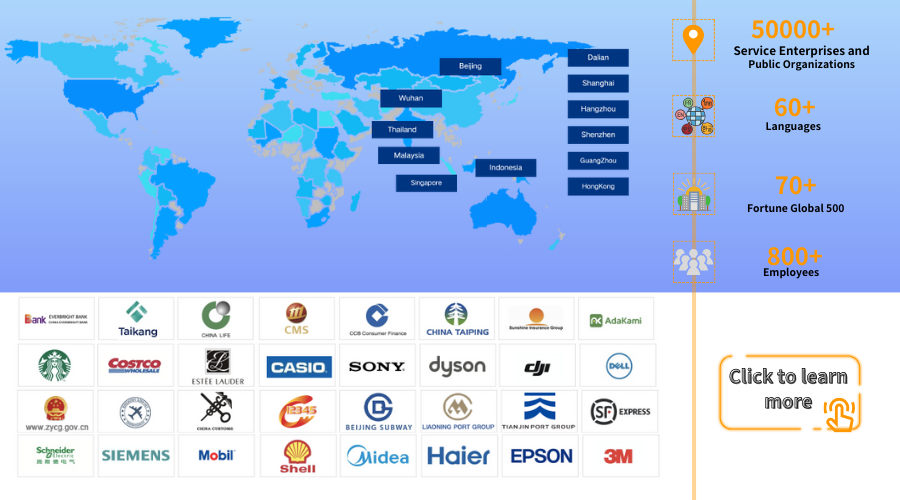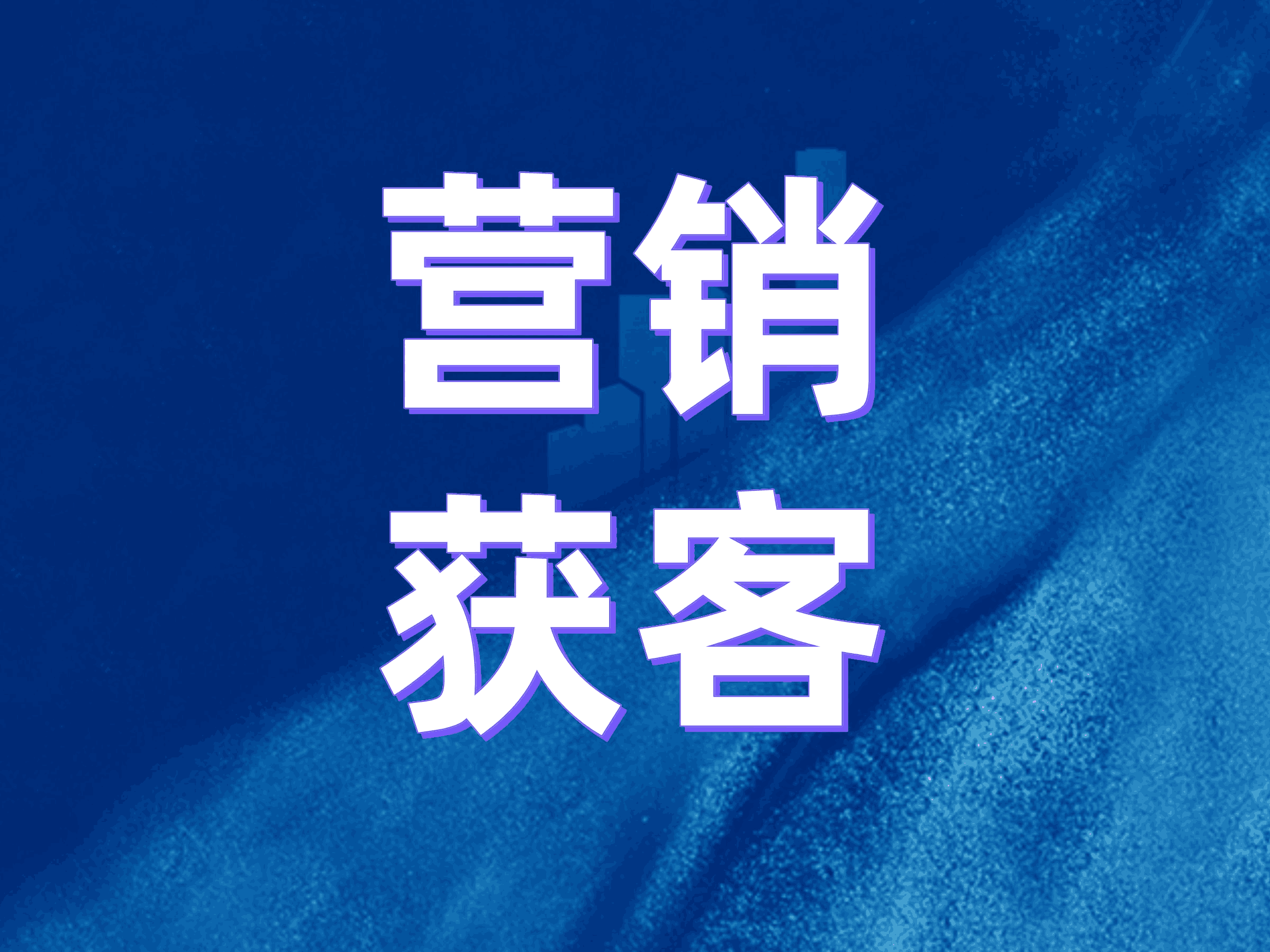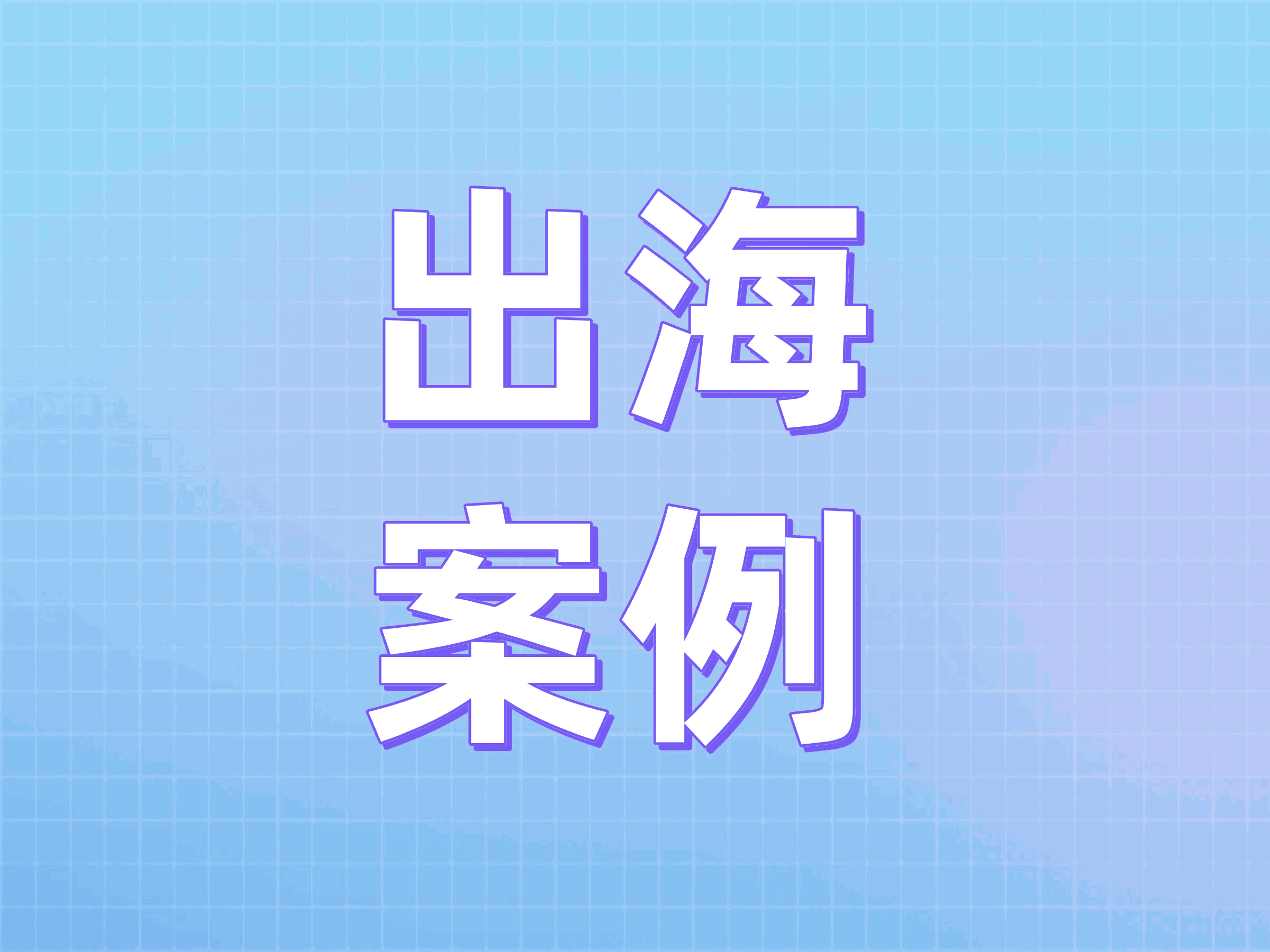Industry Insight | How Much Do You Know About Agent Customer Service? A Comprehensive Guide to the Differences from L0 to L5
700
文章摘要:In 2025, WoFeng Technology has successively held summits in Shanghai and Shenzhen, focusing on the technological upgrade of AI Agents and taking the lead in announcing the next-generation global service platform. A brand-new product is making a stunning debut, once again propelling the intelligent customer service industry into the era of intelligent agents.
Table of contents for this article
In 2025, WoFeng Technology has successively held summits in Shanghai and Shenzhen, focusing on the technological upgrade of AI Agents and taking the lead in announcing the next-generation global service platform. A brand-new product is making a stunning debut, once again propelling the intelligent customer service industry into the era of intelligent agents.
In this meeting, Wofeng Technology took the lead in systematically outlining the theoretical framework for the development stages of the intelligent customer service industry, ranging from L0 to L5. It clearly defined the specific development stage currently within the era of intelligent agents, providing strategic guidance for the future technological evolution path of the intelligent customer service industry. A professional interpretation is now presented on the core feature differences across each level from L0 to L5 in intelligent customer service.
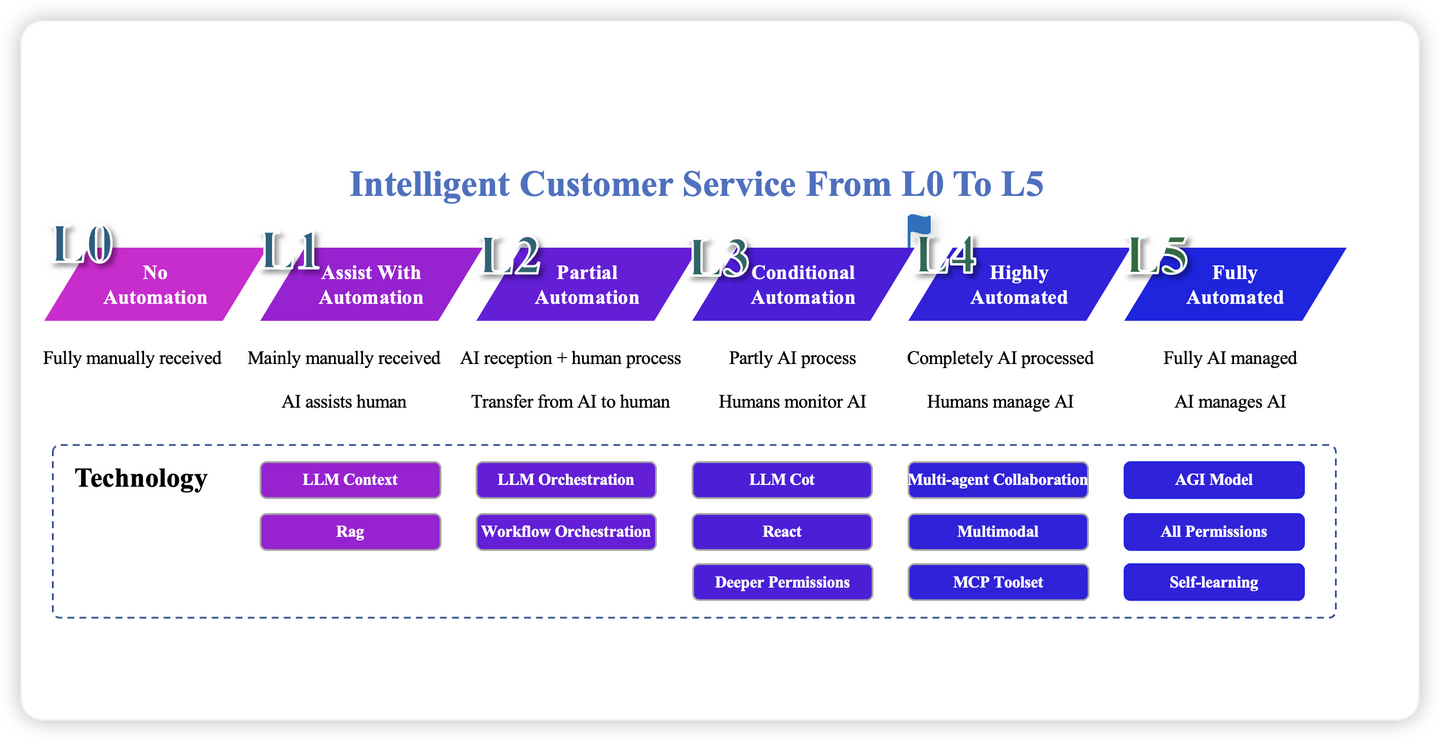
L1: Assisted Automation
Before the L1 level of intelligent customer service, there was the L0 level, which was the manual customer service stage with no automation—entirely handled by human agents. Starting from the L1 level, the era of intelligent customer service began.
L1: Assisted automation, primarily human-led customer service with AI support. At the L1 level of intelligent customer service, AI can provide knowledge recommendations and process guidance. In actual business scenarios, when customers inquire, human agents still handle most cases, with AI assisting them by offering support.
From a technical perspective, L1 intelligent customer service primarily relies on LLM-based context understanding and the knowledge base RAG (Retrieval-Augmented Generation) technology. The LLM (Large Language Model) equips the intelligent customer service with a certain level of context comprehension, enabling it to roughly grasp the customer's intent. Meanwhile, the RAG technology can swiftly extract relevant information from an extensive knowledge base to provide references for human agents.
L2:Partial Automation
L2: Partial automation, AI reception + human handling, AI-to-human handoff. At the L2 level of intelligent customer service, AI can greet customers and understand their needs, but it still lacks the capability to handle complex customer issues, requiring human intervention for resolution.
In addressing common and highly standardized issues, AI customer service bots can independently engage with customers and provide responses based on pre-configured LLM workflows and orchestration rules. This approach allows AI to partially alleviate the workload of human agents, thereby enhancing overall service efficiency and quality.
L3: Conditional Automation
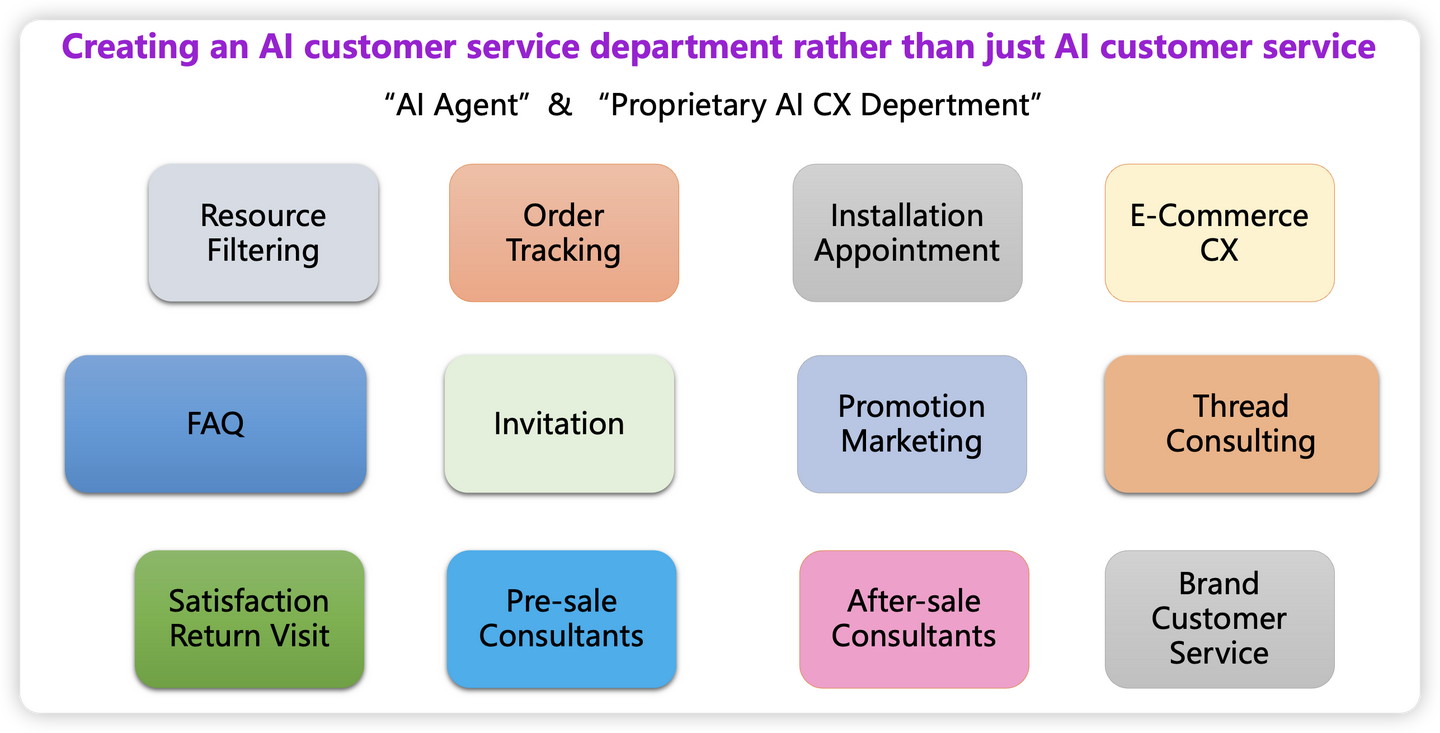
L3: Conditional automation, where AI handles certain tasks under human supervision. At the L3 level, intelligent customer service systems can independently address clearly defined customer inquiries, such as returns, refunds, ticket assignment, and information verification.
At this stage, the AI Agent customer service has developed certain reasoning and decision-making capabilities by leveraging technologies such as LLM inference and ReAct decision mechanisms. To ensure the accuracy and compliance of the Agent's service outcomes, human agents monitor both the service process and results of the AI.
In addition, by granting Agent customer service deeper permissions to access more relevant data and resources, their ability to handle complex business scenarios is further enhanced. Currently, the industry is at the L3 stage, with many enterprises collaborating with WoFeng Technology to develop business intelligence solutions across various sectors, enabling AI to directly address customer inquiries.
L4:High Level of Automation
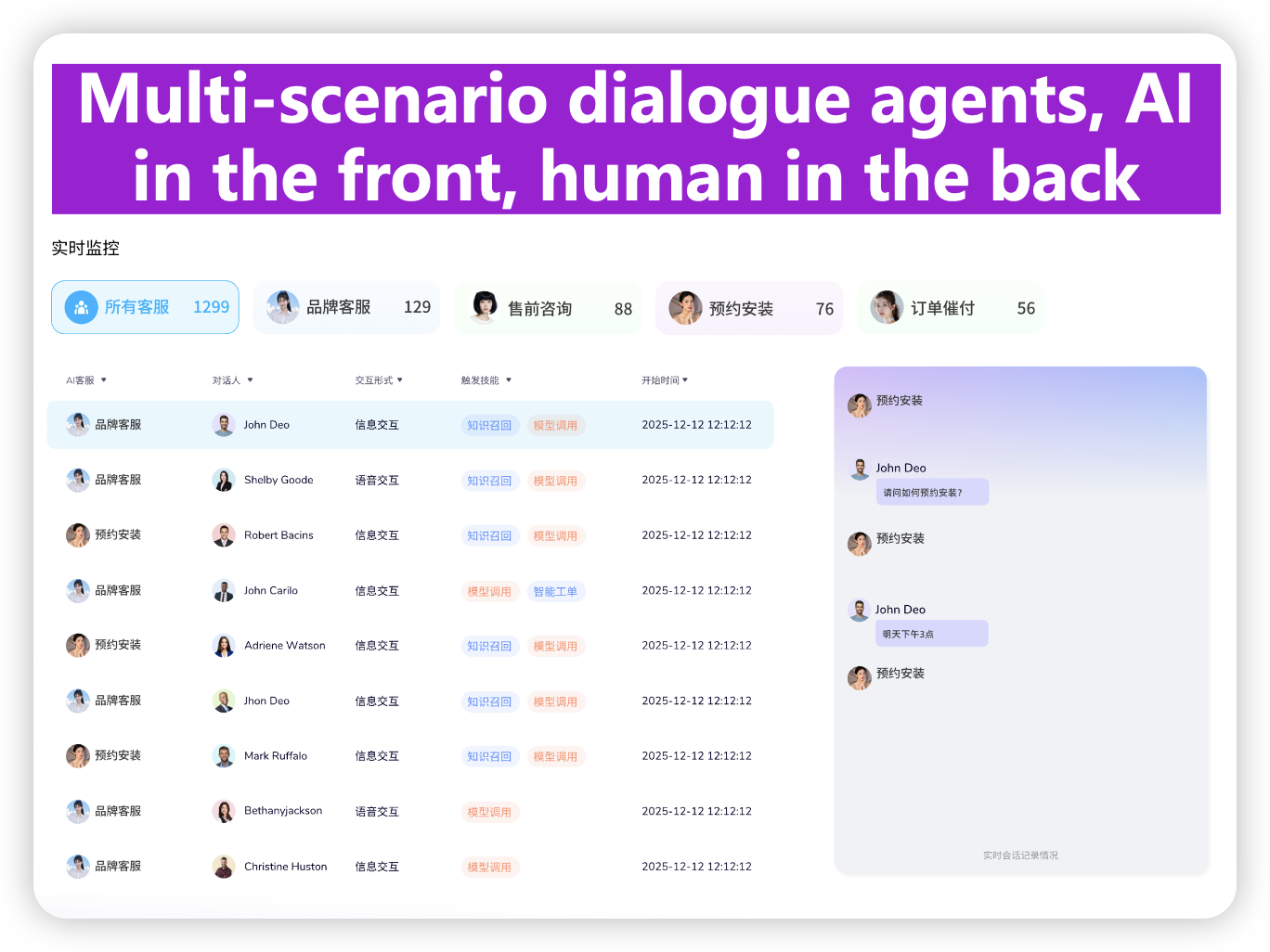
L4: High Level automation, fully AI-driven with human management of AI. At the L4 level,
intelligent customer service achieves a high degree of automation, where enterprises should establish an AI customer service department rather than just an AI customer service system, with all customer issues handled entirely by AI.
At this stage, the collaboration of multiple Agent customer service representatives and multimodal collaboration technologies have become crucial. Different Agent customer service representatives with distinct functions can work together to handle complex customer needs. Additionally, the application of the MCP toolkit enables managers to better manage, optimize, and monitor Agent customer service operations, ensuring their stable and efficient performance.
For example, in large enterprise customer service centers, knowledge Q&A agents responsible for product information, order follow-up agents handling order issues, and after-sales consultation agents resolving post-sale complaints can collaborate effectively based on the type and process of customer inquiries to deliver exceptional service.
L5:Full Automation
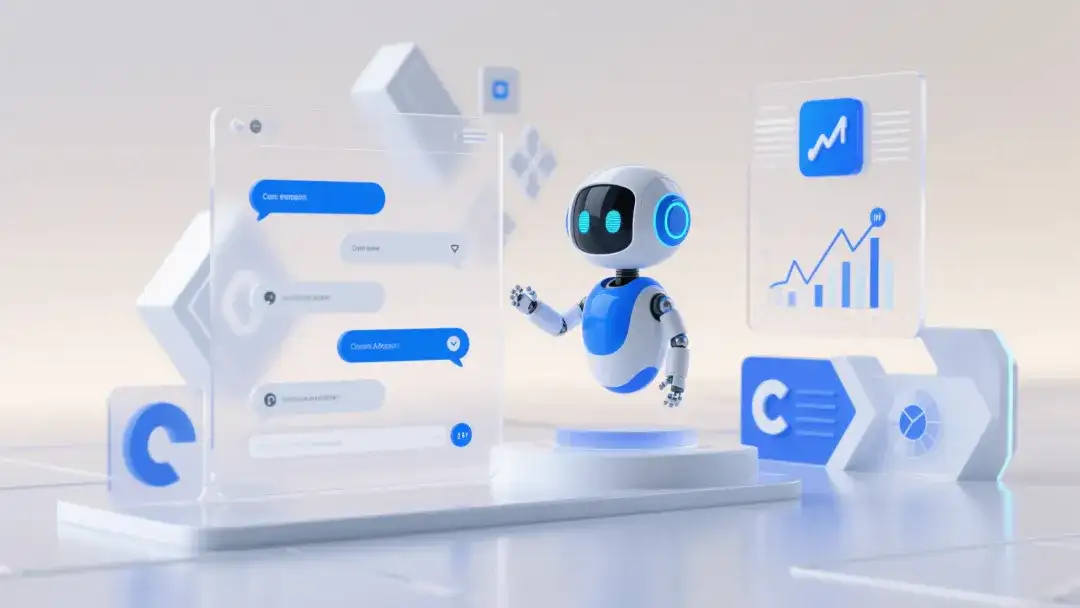
L5: Full Automation, entirely AI-managed, with AI managing AI. L5-level intelligent customer service represents complete automation, achieving the ideal state of AI managing AI.
This relies on AGI large models (Artificial General Intelligence large models) to endow the Agent intelligent customer service with nearly human-like comprehensive intelligence. It possesses self-learning capabilities, enabling it to continuously acquire new knowledge and skills from vast amounts of data and automatically adapt to various complex and ever-changing business scenarios.
At the L5 intelligent customer service stage, AI Agents are granted full permissions, enabling them to autonomously manage and allocate resources while independently resolving various customer issues without human intervention. Although achieving L5-level capabilities still presents numerous technical challenges, it represents the ultimate goal for the future development of intelligent customer service, driving the industry to continuously explore and advance.
Wofeng Technology, leveraging its forward-thinking strategic vision and exceptional technical expertise, has taken the lead in launching the next-generation global service platform for AI Agents—a groundbreaking achievement of immense significance. By introducing the industry's first standard for the development stages of intelligent customer service, ranging from L0 to L5, each phase represents a crystallization of technological innovation and practical exploration, marking a pivotal milestone as intelligent customer service advances into the era of intelligent agents.
"In the future, WoFeng Technology will undoubtedly continue to innovate, making persistent efforts in AI Agent technology iteration and application expansion. By collaborating with industry partners, we aim to drive the prosperity of the intelligent customer service ecosystem, delivering smarter, more efficient, and more thoughtful service experiences to businesses and customers worldwide!"
The article is original by Udesk, and when reprinted, the source must be indicated:https://www.udeskglobal.com/blog/industry-insight-how-much-do-you-know-about-agent-customer-service-a-comprehensive-guide-to-the-differences-from-l0-to-l5.html
next: Customer Service Management System: The Path to Enhanced Quality Service in the New Energy Industryprev: Udesk: Full upgrade of AI-powered customer service

 Customer Service& Support Blog
Customer Service& Support Blog